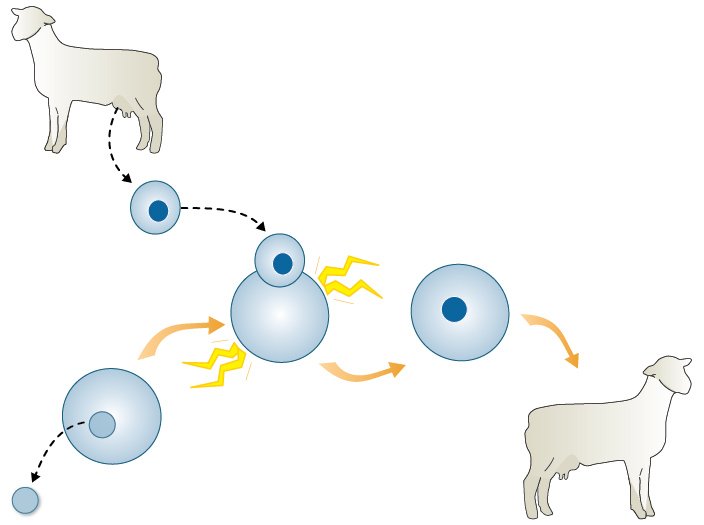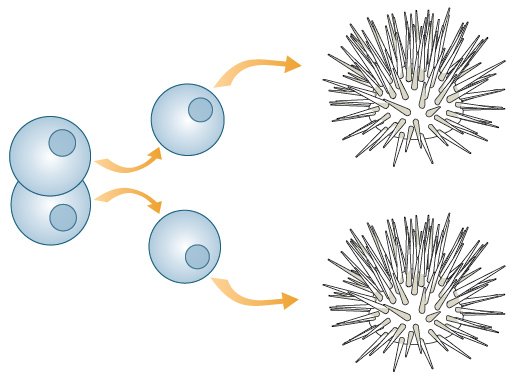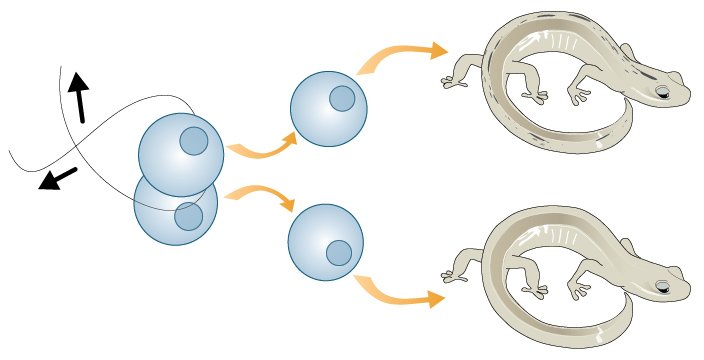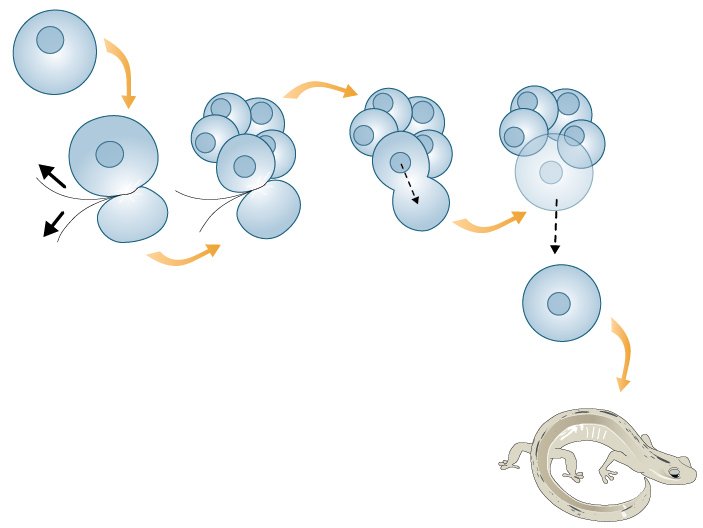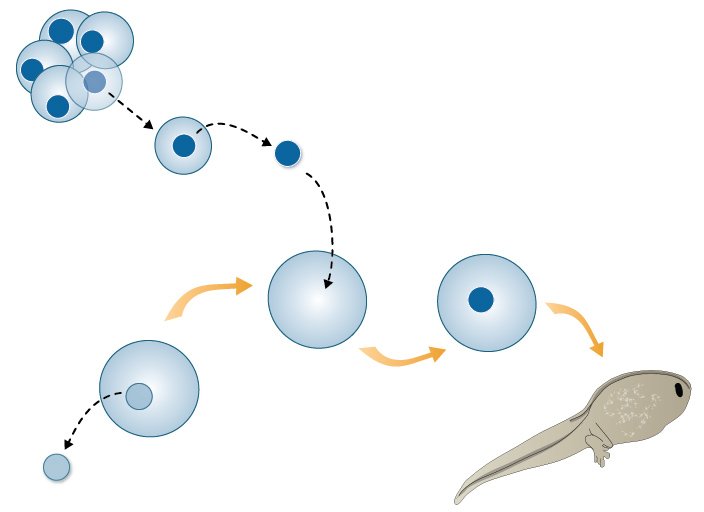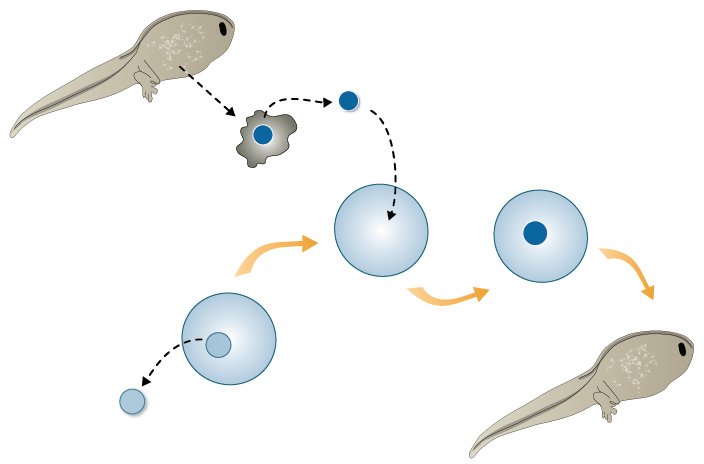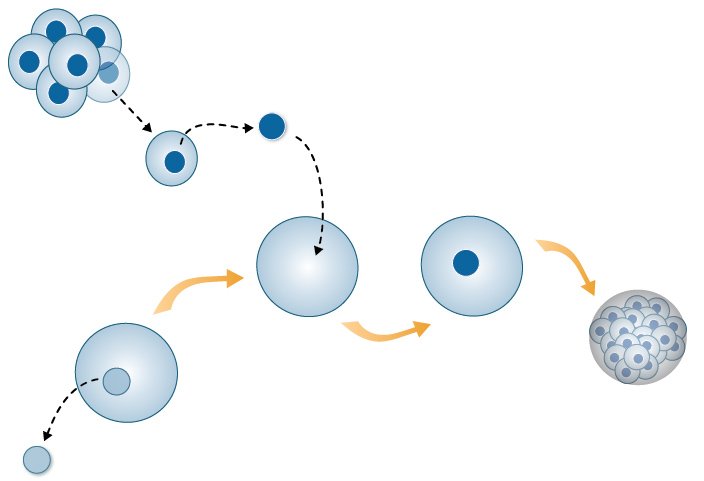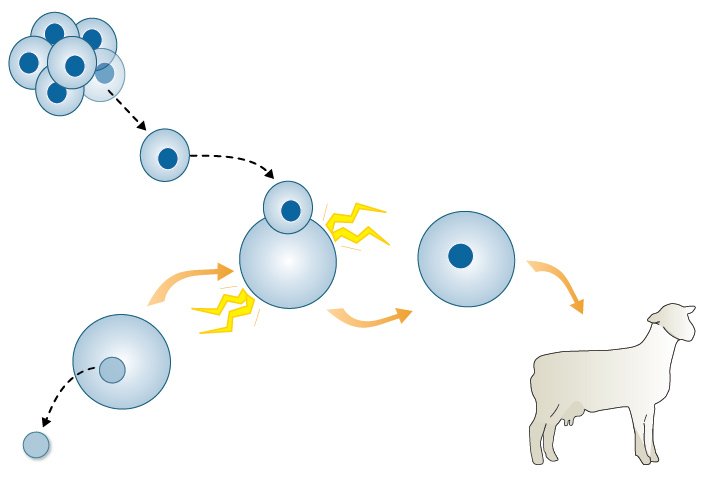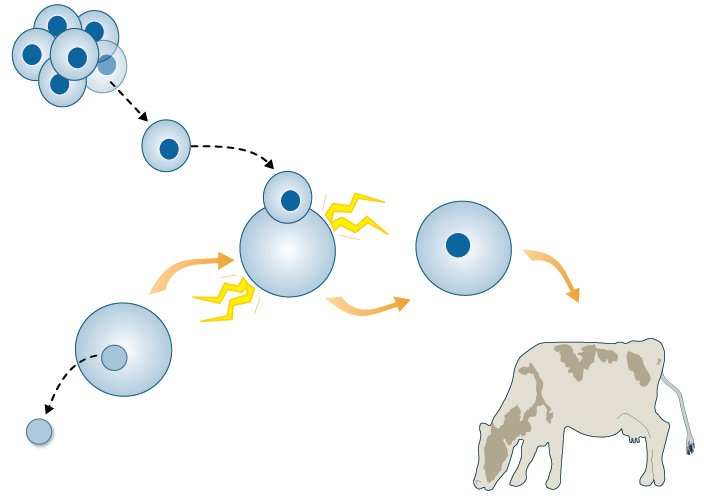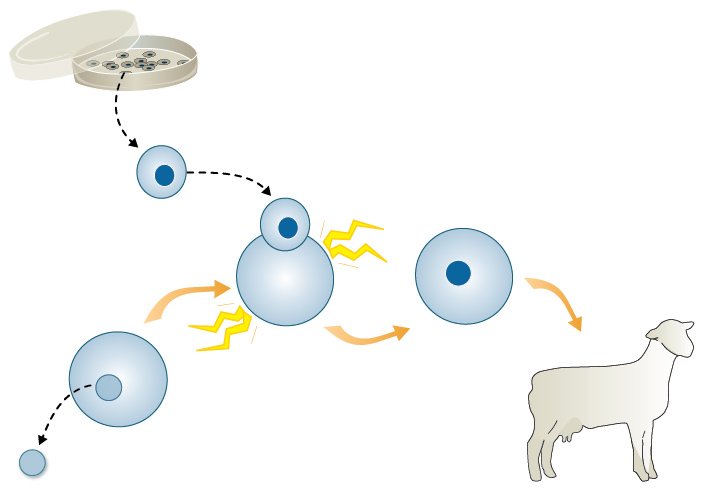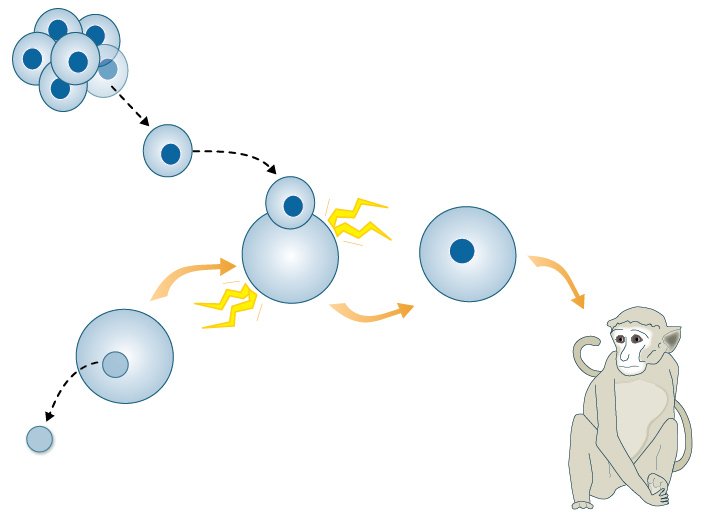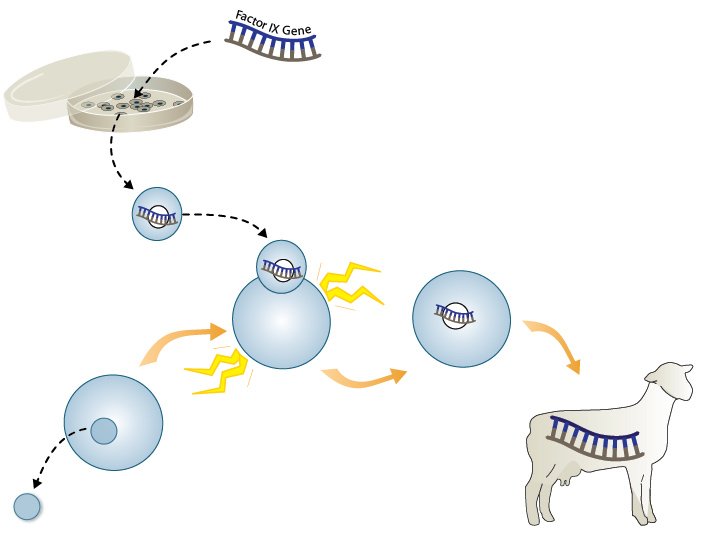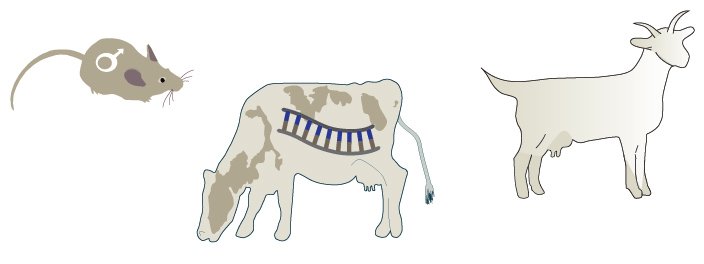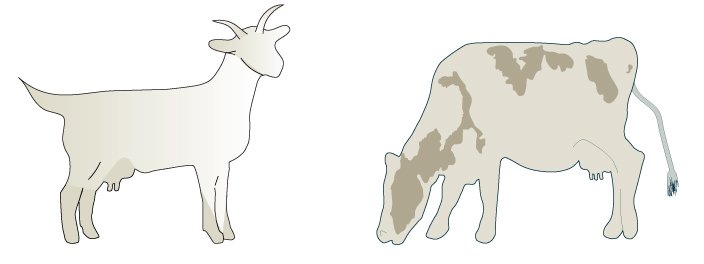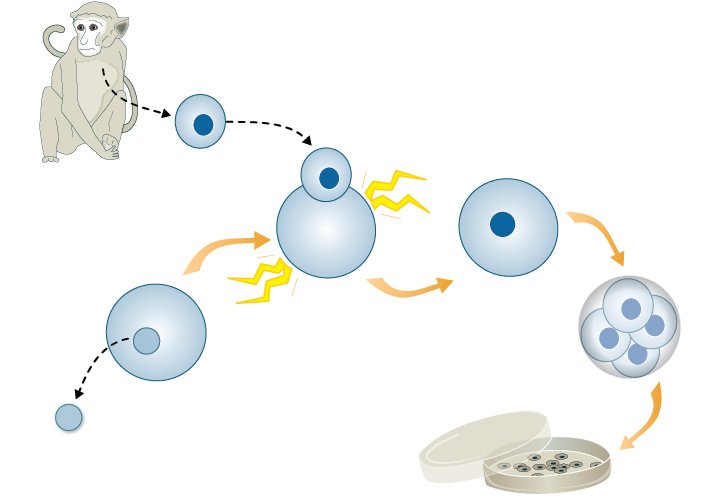Sheep
Ian Wilmut and Keith Campbell
In this landmark experiment, Wilmut and Campbell created a lamb by transferring the nucleus from an adult sheep's udder cell into an enucleated egg. Never before had a mammal been cloned from an adult somatic cell. What was the big deal?
Every cell’s nucleus contains a complete set of genetic information. However, while embryonic cells are ready to activate any gene, differentiated adult cells have shut down the genes that they don't need for their specific functions. When an adult cell nucleus is used as a donor, its genetic information must be reset to an embryonic state. Often the resetting process is incomplete, and the embryos fail to develop.
Of 277 attempts, only one produced an embryo that was carried to term in a surrogate mother. This famous lamb, named Dolly, brought cloning into the limelight. Her arrival started conversations about the implications of cloning, bringing controversies over human cloning and stem cell research into the public eye.
